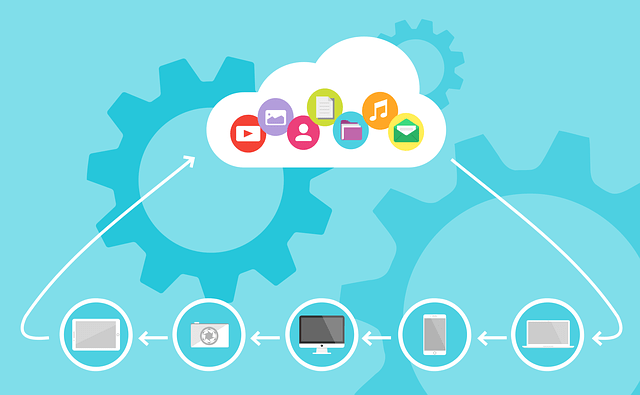What is Annual Contract Value (ACV)?
SaaS businesses need real-time information depicting the current revenue health of the business, allowing them to set goals and take maneuvers accordingly. ACV is a metric that gives insights into the revenue cycle over a span of time, usually one fiscal year. The focal point of assessment is the total annual value of the customer’s subscription or contract for a SaaS company.
Importance of Understanding ACV
It is important for a SaaS business to understand ACV to make prompt business decisions and to ensure sustainability and success. Let’s take a look at how understanding ACV can help.
Predictable Revenue
ACV offers an overview of the revenue stream of an SaaS business. This enables the business to understand the trajectory and fiscal health and make data-driven decisions to achieve business goals.
Customer Lifetime Value
ACV indicates customer expenditure behavior and informs how much a customer spends on average and how much they will spend based on their expense patterns. This helps estimate the lifetime value of a customer., and make information-backed decisions regarding investing in customer retention and growth.
Pricing Strategy
Pricing is important to reel in customers. Assessing the ACV will let the SaaS business know whether they are getting enough customer conversions or not. If the ACV is low, it will indicate there aren’t many customers making a purchase/subscription, prompting the business to make better pricing strategies.
Customer Segmentation
Analyzing the ACV with a focus on each customer segment can assist SaaS businesses in identifying which customers are purchasing the product and which are not. This will enable the business to customize its marketing and business strategy according to each audience segment.
Revenue growth
Collectively, the ACV depicts the trajectory and trend of the revenue of the SaaS business through a marked tenure. This helps a business track progress, set goals, analyze performance, and put growth strategies and plans in place to achieve higher, improved revenues.
What Is Annual Contract Value and How is it Calculated?
By definition, it is the yearly average of total revenue that the customer generates with their subscription for a tenured contract, excluding the one-time fees the customer pays for initiating the contract.
Calculating ACV is pretty straight forward and can be calculated as:
ACV = Total Contract Value $ / Number of Years
Consider the following example:
If a customer pays $50,000 for a subscription to a SaaS service for a 5-year contract, their ACV will be $10,000 per year ($50,000/5).
Role Of ACV As A Metric
Even though ACV cannot dictate the entire success of a SaaS business, it can, however, when combined with other metrics like churn rates, CAC, etc., can help dictate the strategy for a SaaS business. Subscription businesses can use ACV to design customer-centric offers that align with the nature of the business.
For example, businesses like Netflix can aim at a low planned ACV, but since the subscription fees are low, they can easily reel in a large number of customers and make high revenues. In contrast, B2B businesses like Salesforce will have to work with a high ACV to meet their revenue targets since the number of subscribers is not that large.
The Difference Between ACV And Monthly Recurring Revenue (MRR)
Monthly Recurring Revenue (MRR) is another metric that is often compared with ACV. While both metrics are used to gauge revenue and business performance, there are notable differences that dictate the application of both metrics.
Calculation
ACV is calculated by dividing the contract value by the number of years, while MRR is calculated as a sum of all the recurring charges of the customers per month.
Time Frame
The tenure of ACV is different than that of MRR. ACV is calculated to give an overview of the average revenue generated by a SaaS business over a year. MRR gives the picture of total recurring revenue per month.
Flexibility
ACV depicts a much singular aspect of the revenue as it takes into account fewer incurring costs and a fixed contract term. There isn’t much variation in ACV beyond what’s indicated in the contract. It is more of a metric that is used for revenue prediction and forecast, and planning. MRR offers a more real-time value of revenue. It gives an overview of the revenue earned each month.
Focus
ACV tends to only depict the values of revenue generated by individual customer contracts. MRR, on the hand, tends to encompass all major recurring revenue streams of the business.
Why Is Annual Contract Value (ACV) Important for SaaS Businesses?
ACV can help get better control of the following important areas:
Predictability And Stability Of Revenue
ACV provides a predictable and consistent revenue stream, as is based on long-term contracts. This predictability and stability of revenue help businesses plan their finances and operations more effectively.
Ability To Forecast Growth And Plan Resources
By tracking ACV, SaaS businesses can forecast their revenue growth and plan their resources accordingly. This helps them optimize their business strategies and make data-driven decisions.
More Efficient Customer Acquisition Cost
SaaS businesses with higher ACV can offset their customer acquisition costs more efficiently. This is because higher ACV customers tend to have a lower churn rate, meaning they stay subscribed for longer periods and therefore generate more revenue over time.
What Affects ACV In SaaS Businesses?
ACV is susceptible to various factors, including:
Pricing Strategies And Models
ACV is directly influenced by pricing strategies such as cost-plus, value-based or penetration pricing. Different business stages demand different strategies, which can dictate varying subscription rates and influence ACV. Moreover, the various pricing models, like tiered pricing, usage-based pricing or flat-rate Pricing, etc., decide what the final cost of the subscription will be, thus affecting the ACV.
Customer Acquisition Channels And Costs
The customer acquisition channel can be influential in depicting a final subscription cost and, subsequently, the ACV. For example, working with a customer referral program might allow for a higher price of subscription compared to paid advertising, which might require huge sums of money, affecting the ACV.
Upgrades and Incentives
ACV can be increased if the SaaS business offers upgrades, cross-sells, and incentives to the customers as a move towards expanding revenue. This can result in the customers either increasing their contract value by increasing their tenure or subscribing to and upgrading, resulting in a higher ACV.
Churn Rate And Customer Retention
Customers discontinuing or continuing a subscription impacts ACV. A low churn rate will translate to higher ACV and vice versa.
The Impact Of External Factors On ACV
Even factors that are externally linked with a SaaS business, like shifts in economies, global events, and varying marketing trends impact ACV. For instance, a seasonal dip in demand for a SaaS product or a sudden increase in the price of a service can influence the subscription price and, subsequently, the ACV.
How To Increase ACV?
ACV can be upscaled with smart and prompt strategies, including but not limited to the following:
Upselling And Cross-Selling
Offering upgrades, add-ons, and incentives, an SaaS business can convince the customer to increase the contract value, increasing the ACV.
Improving Pricing Strategies And Models
Better, more-value-for-money packages, pricing strategies, and customer-centric pricing models can reel in more customers and encourage existing ones to upgrade to a higher-value contract, resulting in a higher ACV.
Targeting High-Value Customers
A SaaS business can focus and tailor their marketing strategies to draw in high-value customers, allowing for a more direct increase in ACVs and revenues.
Focusing On Customer Success And Retention
Improving customer experience can ensure customer retention. This can draw in more customers and persuade existing ones to subscribe to a higher-valued contract, thus increasing the ACV.
Increasing The Length Of Contracts
Offering value-added services, discounts, and incentives for lengthier contracts can convince a customer to go for a longer, more expensive contract. This will lead to higher ACV and revenues.
Challenges And Limitations for the ACV In SaaS Businesses
Working with ACV in SaaS businesses is often hurdled with challenges and limitations such as:
Fluctuation Due To Diverse Contract
ACV is directly affected by the duration and terms of a contract. While longer contracts can ensure higher ACV, shorter contracts can offer ease of access and encourage more renewals. This can ensure an easier forecast of the revenue streams, which in turn can allow better planning and strategizing.
Difficulties in Predicting Future Growth and Changes
The primary usage of ACV is in predicting the future for setting revenue goals and business targets. Since ACV is greatly affected by many internal and external factors, it can be difficult to ascertain a definite value and trace a growth pattern, and subsequently, in planning growth strategies for the SaaS business.
Impact Of External Factors
Working out the ACV and the growth strategies that rely on it is influenced by external factors such as global recessions, wars, market competition, etc. This poses an undue challenge for SaaS businesses to set business targets and make corporate decisions.
Conclusion
SaaS is certainly the corporate game-changer of tomorrow and has already taken over traditional software delivery channels for the most part. It is necessary to understand all the factors that play a significant role in SaaS-based businesses, and the Annual Contract Value certainly has a top spot on that list.
It is a sensitive metric, susceptible to stimulants that range from a change in customer behavior to global recessions, and thus must be carefully worked with. An accurate understanding of such metrics and the right strategies can help establish and grow a successful SaaS business.


